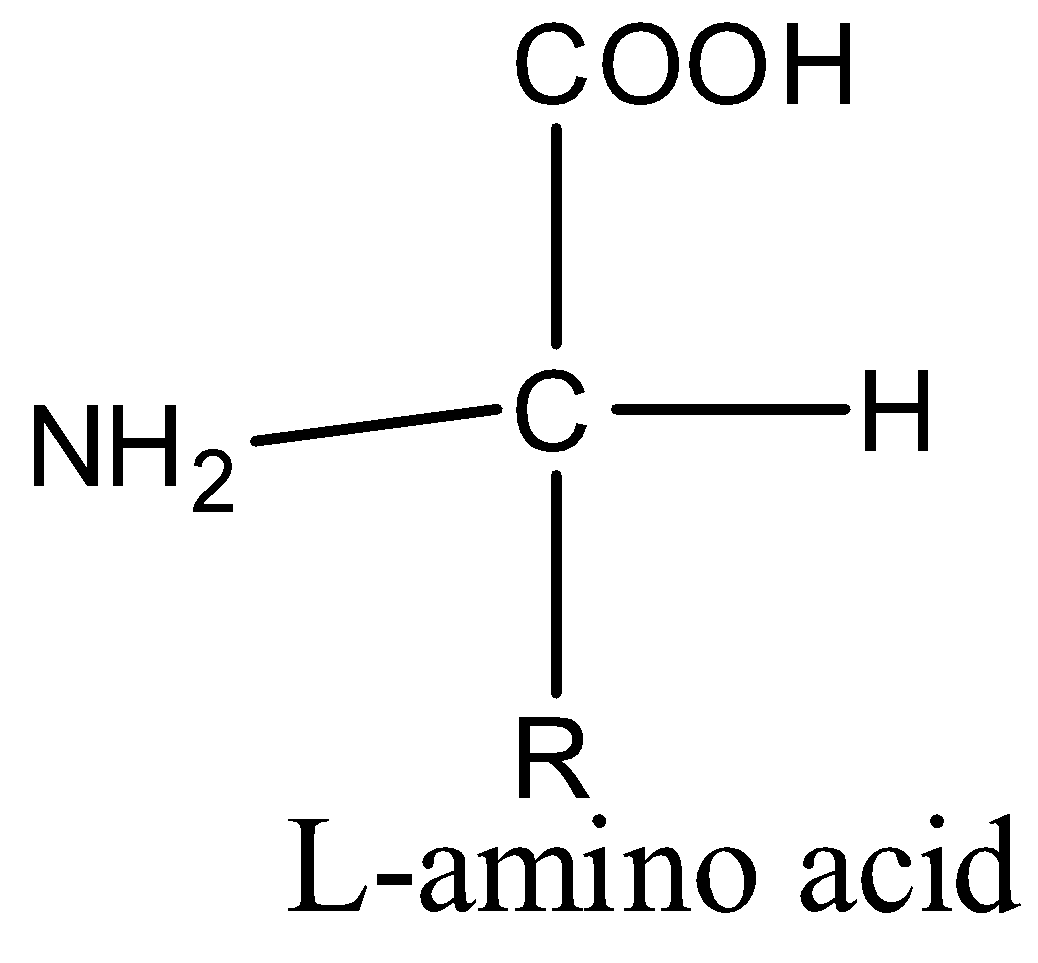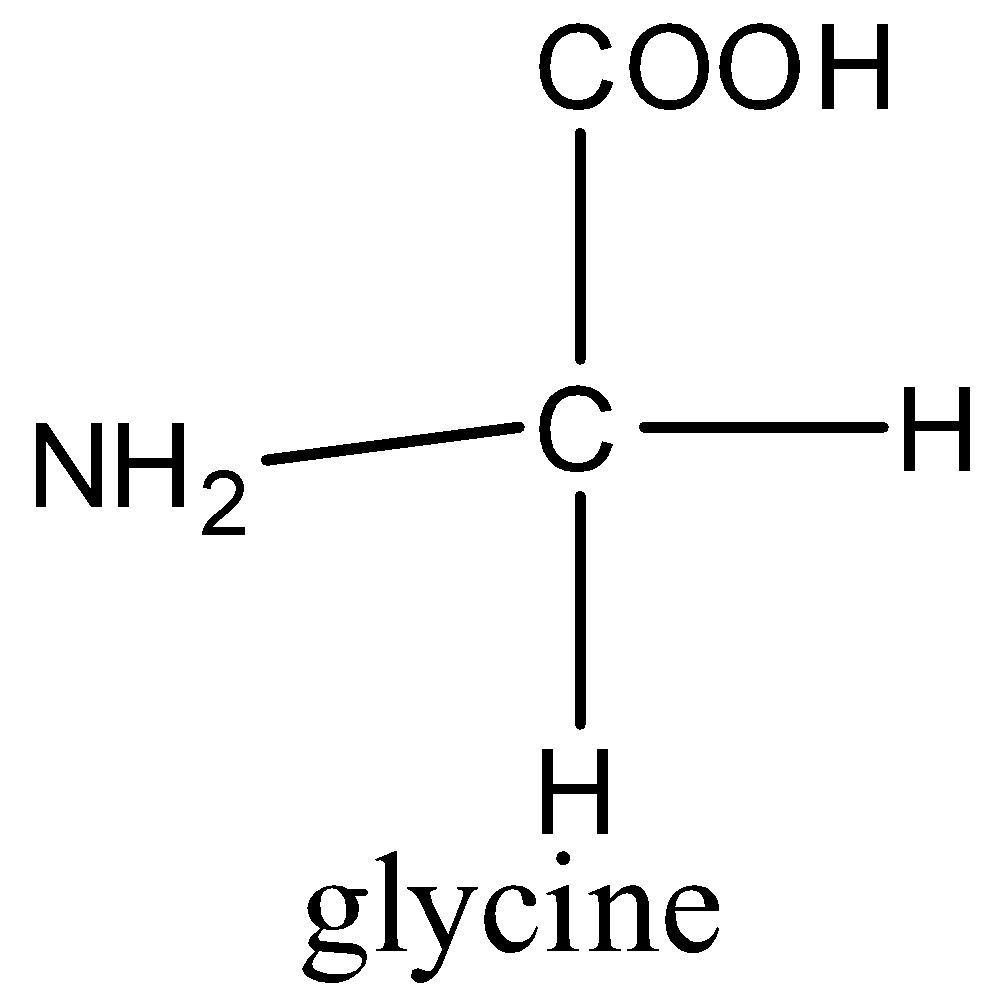
Which of the following is not true about amino acids?
(a)- They are constituents of all proteins.
(b)- Alanine having one amino and one carboxyl group.
(c)- Most naturally occurring amino acids have D-configuration.
(d)- Glycine is the only naturally occurring amino acid which is optically inactive.
Answer
518.7k+ views
1 likes
Hint: α-amino acids are the building blocks of protein. The optical activity of the compound is checked by checking whether the compound has a chiral carbon atom. The amino acid is classified into neutral, acidic, and basic.
Complete answer:
Let us study all the options one by one:
(a)- They are constituents of all proteins.
Chemically proteins are condensation polymers (actual polyamides) in which the monomeric units are the
(b)- Alanine having one amino and one carboxyl group.
(c)- Most naturally occurring amino acids have D-configuration.
All the naturally occurring amino acids belong to the L-series. In other words, a protein exclusively consists of L-amino acids. In contrast, all the sugar belongs to D-series.

(d)- Glycine is the only naturally occurring amino acid which is optically inactive.
All the amino acids are optically active because they have chiral carbon atoms i.e., a carbon atom which has all the four substituents different. But in glycine, the carbon atom has one amino, one carboxyl, and two hydrogen groups.

So, the correct answer is “Option C”.
Note: There are some exceptions of amino acids that must be kept in mind while reasoning these questions. For checking the optical activity the chiral carbon should be checked, if only one chiral is present in the compound then it is optically active.
Complete answer:
Let us study all the options one by one:
(a)- They are constituents of all proteins.
Chemically proteins are condensation polymers (actual polyamides) in which the monomeric units are the
(b)- Alanine having one amino and one carboxyl group.
(c)- Most naturally occurring amino acids have D-configuration.
All the naturally occurring amino acids belong to the L-series. In other words, a protein exclusively consists of L-amino acids. In contrast, all the sugar belongs to D-series.

(d)- Glycine is the only naturally occurring amino acid which is optically inactive.
All the amino acids are optically active because they have chiral carbon atoms i.e., a carbon atom which has all the four substituents different. But in glycine, the carbon atom has one amino, one carboxyl, and two hydrogen groups.

So, the correct answer is “Option C”.
Note: There are some exceptions of amino acids that must be kept in mind while reasoning these questions. For checking the optical activity the chiral carbon should be checked, if only one chiral is present in the compound then it is optically active.
Latest Vedantu courses for you
Grade 8 | CBSE | SCHOOL | English
Vedantu 8 CBSE Pro Course - (2025-26)
School Full course for CBSE students
₹45,300 per year
Recently Updated Pages
Master Class 12 Economics: Engaging Questions & Answers for Success

Master Class 12 Maths: Engaging Questions & Answers for Success

Master Class 12 Biology: Engaging Questions & Answers for Success

Master Class 12 Physics: Engaging Questions & Answers for Success

Master Class 12 Business Studies: Engaging Questions & Answers for Success

Master Class 12 English: Engaging Questions & Answers for Success

Trending doubts
Which are the Top 10 Largest Countries of the World?

a Tabulate the differences in the characteristics of class 12 chemistry CBSE

Why is the cell called the structural and functional class 12 biology CBSE

Differentiate between homogeneous and heterogeneous class 12 chemistry CBSE

Derive an expression for electric potential at point class 12 physics CBSE

What are the major means of transport Explain each class 12 social science CBSE




